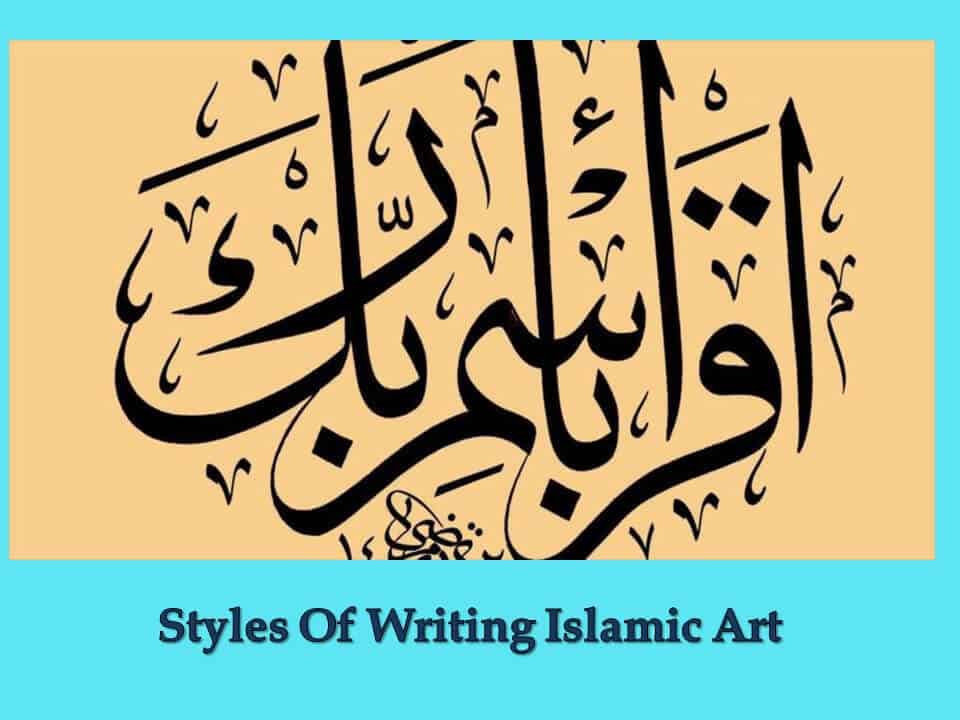Are you looking for Islamic art for home? Before you head to a store or long online to look for Islamic art for sale, it would do good to understand the different style of Islamic calligraphy, the art of writing the verses of the Quran, which is the mainstay of Islamic art. Each style developed in a particular place, at a specific time, and has its distinct set of rules of writing. Here we explore the different styles of writing the Quranic verses:

- Kufic: This is the earliest font, which originated in 7th century Kufa, Iraq. It was reportedly the first style of writing the Quran at a time when the Arabic script contained no diacritical marks and symbols to indicate vowel sounds. Later, as non-Arabic speaking populations started converting to Islam and were not familiar with the language of the Quran, diacritical marks were brought in. In the Kufic style, letters have horizontal strokes that are too long or too short, and the round characters have tiny counters.
The style branched into different forms such floral, foliated, plaited or interlaced, bordered, and squared Kufic.
Around the 10th century, the use of Kufic in transcribing the Quran disappeared gave way to the new more legible font, Naskh. It, however, continued to be used for decorative purposes such as in ceramic plates.
- Naskh: This cursive style became popular on account of both the ease of reading as well as writing that it offered. Even now, many centuries later, it continues to be used in transcribing the Quran. It formed the basis of the modern Arabic script and is still used in newspapers, periodicals, official decrees and private correspondence.
- Thuluth: Thuluthis an artistic font art. ‘Thuluth’ is English for ‘one third’. In this kind of font, one-third of the letters are straight. It has a very striking appearance on account of its long vertical lines, broad spacing and special emphasis on dots and other vowels sounds. Because of its grand look, it is used for ornate purposes. It adorns the walls and ceilings of many monuments, and people also use it for Islamic art for home.
- Nast’aliq: This regional style evolved in Iran, and is used for non-religious purposes such as writing court documents as well. The name ta’liq means “hanging”, and refers to the slightly tilted appearance of the font as the letters slope right to left.
- Diwani: This style came into being during the reign of the Ottoman sultans in the 16th It is a very elaborate font – the letters are slanted, and the narrow spaces between them are densely covered with decorative dots. The Diwani script is difficult to read and was used in writing secret court papers. These days, on account of its ultra-decorativeness, the Diwani font is very suitable to be used for the purpose of Islamic art for home, and you are likely to find many artworks bearing this very stylish script in stores that create Islamic art for sale.


